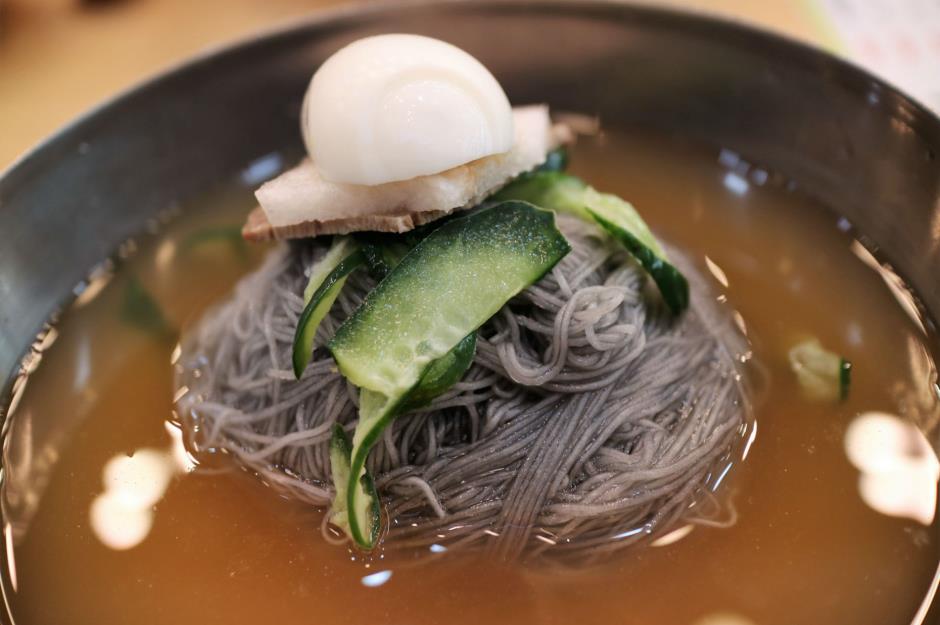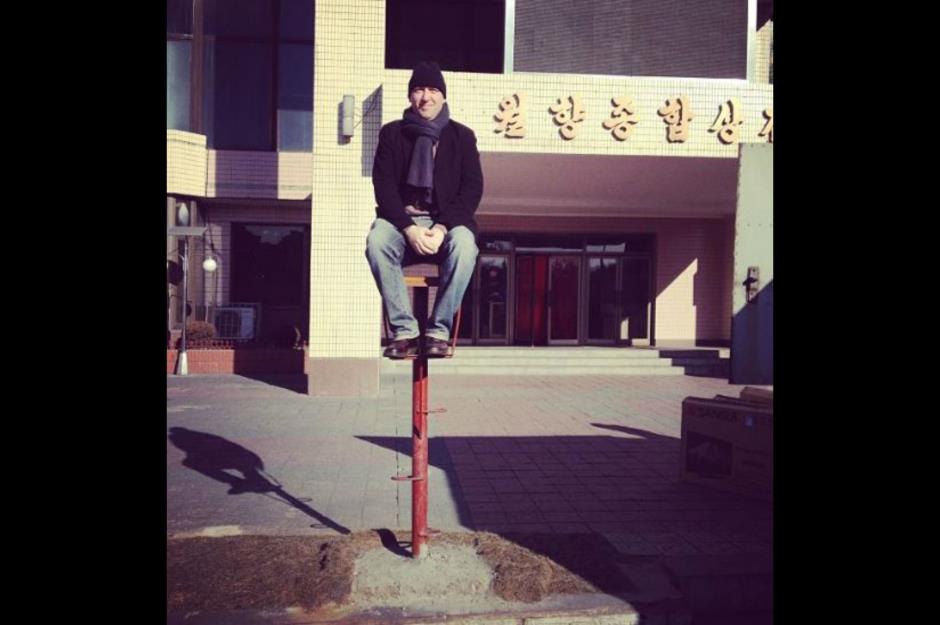The surprising truth about what people really eat in North Korea

Shutterstock
Food in the secret kingdom
In a population that was once ravaged by a famine and still has food rationing, the people of North Korea (DPRK) have eating habits like nowhere else in the world. We spoke to a man who has visited the secret kingdom 159 times to find out the truth about what it’s really like to eat there.

Instagram/simonkoryo
159 visits, 14 years
Simon Cockerell, general manager of North Korea tour specialist Koryo Tours, has been visiting North Korea since 2002. Over the course of 14 years, he has traveled to, toured around and eaten in the country 159 times. We reveal some of his experiences, and why food is such a sensitive topic.
No food culture
First things first: food is not a culture in North Korea. “Culture is something that comes about beyond necessity. Nobody has a culture of just eating rice,” Simon says. Unlike much of the West, where eating is a cultural and sociable activity, eating in North Korea is just viewed as an essential daily activity.
Shutterstock/Attila JANDI
Memories of a famine
This is primarily because, according to news reports, the population of North Korea was living in a famine as recently as the early 90s, and a large proportion of the country still struggle to find enough food to eat.
Distribution
One of the main reasons people struggle to find enough food to eat could be due to the lack of infrastructure to allow for the distribution of food. Reports have shown the shortage of roads, train tracks and electrical infrastructure is evident from space. While there may appear to be many roads, those that are accessible are limited, crumbling, unpaved and in desperate need of modernization.
Lack of variety
Because food can’t be transported easily around the country, Simon explains that a monoculture is forming, whereby people are only able to eat the foods directly available in their area. “If you live in a rice-growing area, most of what you eat is rice. If you live in a potato-growing area, most of what you eat is potatoes. The biggest challenge is producing enough food, but another is avoiding a monoculture – people have got to eat more than rice and potatoes.”
Location is luck
Many people have no choice as to where they live, or where they are born. If you’re born by the coast, you’re lucky. Being by the coast means you have access to more fresh ingredients such as fish, leading to a much more nutritional diet. Those born in mountainous valleys, miles from the nearest road, aren’t so lucky, and are confined to the produce grown in the immediate area.
Uri Tours/Wikimedia Commons
Eating out
In the capital Pyongyang, which has a population of three million, there is more food available – restaurants even – but the food scene is kept relatively quiet. Restaurants are often empty, and many people don’t eat out because it’s too expensive. Eating out is considered to be a more middle-class thing to do.
Middle class
The middle class of Pyongyang is a very recent emergent force and it’s no longer shameful to be better dressed or have more money than somebody else. But food is fundamental and is much more sensitive than clothes, so eating out can sometimes be viewed as ‘showing off’.
What's on offer
However, for those who do want to eat out, there are more restaurants than you might expect in Pyongyang. The restaurants in the city vary from sushi to pizza, as well as a selection of ‘high-end’ places.
Upmarket restaurants
But even the more upmarket restaurants would seem somewhat inexpensive to the typical middle-class person elsewhere in the world. Going to the most expensive restaurant in Pyongyang will set you back around $50 (£41) per person. Yet for the average person in North Korea, that is an awful lot of money.
No views
Because eating on show isn’t a classy thing to do, all the windows inside restaurants are covered up. Looking for a restaurant with a view? Don’t eat out in Pyongyang. “Some of the restaurants have incredible views, but nobody can see them,” Simon says.
And no al fresco dining
This also means you won’t find people eating outside either. Unlike the hugely popular ‘al fresco’ culture that exists elsewhere in the world, in North Korea it’s a no-go. “It’s pretty gross to be stuffing your face in the window of a restaurant in Pyongyang, so restaurants don’t have outdoor seating either – it’s not considered a classy thing to do,” Simon explains.
A sensitive subject
But this etiquette hasn’t derived because people passing by are starving, it’s just because food is still so sensitive. “People are not as ostentatious about food as they are elsewhere. It’s mainly a result of their hardships in the late 90s.”
Food rations
There is still rationing in North Korea, which means people are paid in cash, and one of the main goods they spend it on is food, usually from local markets.
Supermarkets
But for those with a little more cash to spare there are supermarkets too. However, supermarkets are primarily aimed at the middle class, so there are fewer of them than you might imagine. Inside those that you do come across, most products are domestic, but you’ll find a selection of international products on the shelves, such as canned food, alcoholic drinks, and fruit from abroad.
Domestic products
But the range of international products is still very small. Most of the food on offer is grown in North Korea itself. This means that fruit isn’t a particularly big commodity in the country because, aside from apples which grow domestically, most other fruit products still need to be imported.
Three meals a day
Regardless of what time it is, people in North Korea never miss a meal by choice. Because many have memories of living in a famine in the 90s, missing a meal is seen as an extravagance, so people eat three times a day, even if it means dinner is at 12am and breakfast is at 1pm.
On the menu
Although a typical household meal varies throughout the country, a standard breakfast, lunch and dinner are all likely to consist of some form of rice, soup or noodles. These are all the main staple foods that finish off a meal. Depending on the season, locals are also likely to dine on kimchi (fermented vegetables), vegetables and, in some cases, meat.
Signature dish
The most famous signature dish in Pyongyang is cold noodles – a dish that “looks horrible, but tastes great”. The dish consists of black buckwheat noodles, served in a metal bowl in a clear broth with mustard and vinegar.
Unusual food
“It’s not South China, so there’s nothing incredibly weird to eat in North Korea – it’s mostly vegetables, meat, soup and kimchi,” Simon says. But look hard enough and you will find the likes of clams cooked in gasoline.
Dog meat
There are a lot of myths associated with North Korea. One of the most common concerns dog meat. People assume, when they encounter an unidentified dark meat, that it is dog. But Simon claims: “It is inevitably not dog – it is expensive and somewhat rare. It is never the case.”
Myths busted
Another of the most common myths is the assumption that traveling to North Korea is an opportunity to lose weight. “The expectation that there will be insufficient food for them on the trip,” Simon explains. “I have been on tours when some people have brought in with them vast amounts of food, to the point where if they were given nothing to eat on the trip they would still have more than enough just from what was in their case.”
The tourist experience
Despite this, the tourist experience is totally different. Going to North Korea is not about not eating enough food. “Food is a sensitive topic, but the areas tourists visit tend to be better off areas. For one, because that’s where you’re allowed to go, and also because that’s where you can physically get to,” he adds. This means tourists can dine on anything from toast and omelets for breakfast, to sushi and pizza for dinner.
Expectations vs reality
Food may not be a culture in North Korea, but it is certainly a huge part of life. Unlike anywhere else in the world, the topic of food is sensitive and, in some cases, trashy, but the truth behind it is complex. “It’s worthy of people’s time, trying to understand it,” Simon says. “There is more to a country than the actions of a few people in the news.” You can view Simon's Instagram account with photos live from North Korea here.

